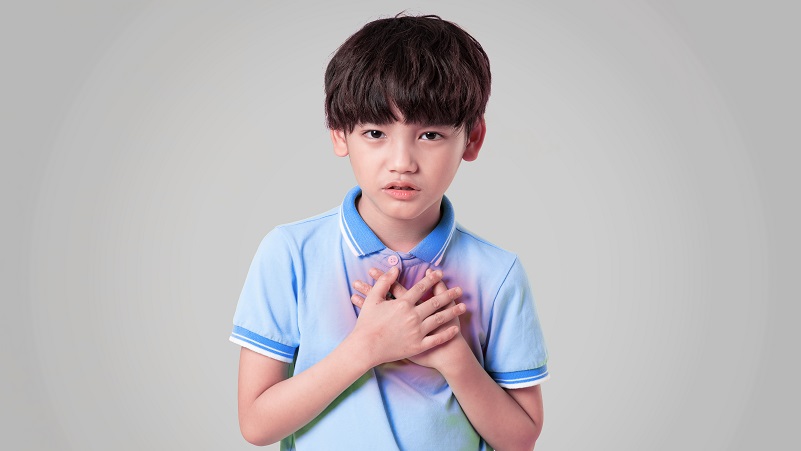EnvisioningHealth - Changing Lives One Idea at a Time | Incredible Care
Mending young hearts:
care for rare paediatric heart conditions
Navigating the complexities of congenital heart defects in young patients,
NUH shines a light on the resilience of survivors like Ern-Wei and Emmanuel,
and the medical challenges they overcome.
Issue 2 | September 2023

 Subscribe and ensure you don't miss the next issue!
Subscribe and ensure you don't miss the next issue!
With World Heart Day right around the corner, understanding the gravity of heart-related issues affecting our communities has never been more pressing. Data from the
Singapore Heart Foundation reveals that cardiovascular diseases were responsible for one in three deaths in Singapore, highlighting an
alarming rise in such conditions here. This local trend aligns with a global backdrop where heart disease-related deaths have
surged by 60% over the past three decades.
Within this broader context, about one in a hundred babies are born in Singapore with
congenital heart disease. These abnormalities range from relatively minor issues like small holes that may not require intervention, to intricate structural anomalies demanding meticulous medical attention.
Paediatric heart conditions, as diverse as the children they affect, span from those that resolve without treatment to complex ones that necessitate lifelong care and monitoring.
From patient to healer
Born with not one but two congenital heart conditions, Peck Ern-Wei’s early years were marked by multiple surgeries and the associated challenges of managing and living with such conditions. He had a
ventricular septal defect, which is a hole in the wall separating the heart’s lower chambers, and a coarctation of the aorta, a condition where the main artery is narrowed.
Hospital stays were punctuated with moments of uncertainty and hope—like the sudden need for cardiopulmonary resuscitation (CPR) after an initially encouraging recovery from his third surgery. Ern-Wei’s parents navigated the challenges of caring for a child with two congenital heart conditions, from grappling with restrictions on his physical activities to witnessing the emotional strain of medical interventions.
“Understanding and early detection of paediatric heart conditions can make all the difference. I’d advise parents to always be observant, seek expert counsel, and remember that medical advancements today offer hope even in the most challenging cases,” says
Professor Quek Swee Chye, head & senior consultant,
Division of Paediatric Cardiology,
Department of Paediatrics, Khoo Teck Puat – National University Children’s Medical Institute in the National University Hospital (NUH), who was in Ern-Wei’s primary team of doctors.
Today, Ern-Wei is a testament to unwavering resilience and NUH’s care. Having completed his studies at the medical school of the National University of Singapore, he now wants to care for those braving similar health ordeals.
“Having been on the receiving end, I’ve felt how much comfort a medical professional’s words can bring to both the patient and their loved ones,” says Ern-Wei. “Now as a doctor, I want to be that pillar of support for others, much like how my caregivers stood by me.”
Mirrored anatomy poses uncommon challenge
For most of us, our organs sit in predictable positions in the body. But for one in 10,000, this is not the case. Known as situs inversus totalis, the arrangement of organs in the chest and abdomen are mirrored. For young Emmanuel Pang, it was combined with narrowed heart valves, which required open-heart surgery soon after his birth.
“The heart leans towards the left. But with Emmanuel’s mirror-image anatomy, everything was reversed, posing a unique challenge” says
Dr Chen Ching Kit, senior consultant at the Division of Paediatric Cardiology, Department of Paediatrics, at the Khoo Teck Puat – National University Children’s Medical Institute in NUH.
The rarity of the condition requires flexibility, creativity, and comprehensive scans in order for surgeons to adapt surgical techniques accordingly. True to this challenge, Dr Chen and his team were nothing if not flexible and resourceful. With the aid of technology, they made use of 3D-printed life-sized models of Emmanuel’s heart to visualise and rehearse the procedure, which significantly reduced the time needed for the operation.
Emmanuel’s surgery, performed just shy of his first birthday, was a success. Now in Primary 1, the boy is doing well and needs just biannual check-ups. He now revels in dance and play, though he occasionally needs rest during strenuous activities.
Is surgery inevitable?
Congenital heart disease represents a spectrum from mild anomalies to life-threatening conditions. About 66% of congenital heart anomalies will need surgical correction during a patient’s lifetime. The more severe the condition, the sooner surgery needs to be performed. Mild anomalies, such as atrial septal defects, may not require immediate intervention.
Over the past two decades, primary complete repairs have become the standard in paediatric cardiac surgery. This approach proactively rectifies issues before they inflict irreversible damage on patients. In such cases, timing is of the essence—surgeons sometimes have to operate on newborns to ensure optimal outcomes.
Congenital cardiac surgery relies on close cooperation and open communication among healthcare professionals of diverse specialities. “Much like an orchestra, various specialists play distinct roles together or in ensemble: cardiologists diagnose, surgeons repair, anaesthesiologists and perfusionists maintain vital parameters, and intensivists manage post-operative care,” says
Associate Professor Laszlo Kiraly, Head of Division & Senior Consultant,
Paediatric Cardiac Surgery, Department of Cardiac, Thoracic and Vascular Surgery,
National University Heart Centre, Singapore.
However, some interventions—about 15 to 20% of all cases—may need repetition as a single operation cannot address all concerns. In these instances, surgeons adopt a staged approach, moving step by step towards a definitive goal.
“For example, achieving a one-circuit physiology in patients with only one functioning ventricle typically entails with staged surgeries,” adds A/Prof Kiraly. “Furthermore, as young patients grow, previously implanted valved conduits become undersized, which requires replacements during subsequent operations to keep pace with their growth.”
Like this article? Simply subscribe to make sure you don't miss the next issue of EnvisioningHealth!
